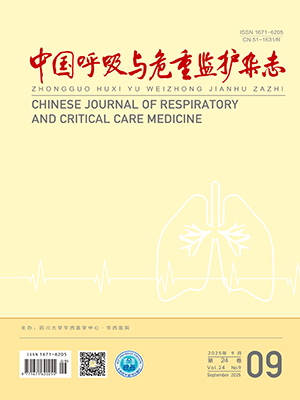Objective To explore the hemodynamic monitoring value of pulse-indicated continuous cardiac output( PiCCO) during lung transplantation. Methods Twenty patients with end-stage lung disease undergone lung transplantation were enrolled. Hemodynamic states were monitored by PiCCO and Swan-Ganz standard thermodilution pulmonary artery catheter( PAC) simultaneously at six stages throughout the study. Changes in the variables were calculated by subtracting the first fromthe second measurement( Δ1 ) and so on ( Δ1 to Δ5 ) . Results The linear correlation between intra-thoracic blood volume index( ITBVI) and stroke volume index( SVIpa) was significant ( r = 0. 654, P lt; 0. 05) , whereas pulmonary artery wedge pressure ( PAWP) poorly correlated with SVIpa( P gt; 0. 05) . Changes in ITBVI correlated with changes in SVIpa ( Δ1 , r =0. 621; Δ2 , r = 0. 784; Δ3 , r = 0. 713; Δ4 , r = 0. 740; Δ5 , r = 0. 747; all P lt; 0. 05) , whereas PAWP failed. The mean bias between CIart and CIpa was ( 0. 09 ±0. 5) L·min-1 ·m-2 ; the limit of agreement was ( - 0. 89 ~1. 07) L·min-1 ·m-2 . Conclusions There is good correlation between the two methods of PiCCO and PAC for reflecting the change of heart preload. PiCCO is reliable in hemodynamic monitoring in patients undergone lung transplantation.
Citation: YAN Jie,XU Hongyang,ZHU Yanhong,WANG Yanjuan,LIANG Fengming,YANG Ting,CHEN Jinyu.. Hemodynamic Monitoring by Pulse-Indicated Continuous Cardiac Output Analysis During Lung Transplantation. Chinese Journal of Respiratory and Critical Care Medicine, 2010, 9(2): 184-187. doi: Copy
Copyright © the editorial department of Chinese Journal of Respiratory and Critical Care Medicine of West China Medical Publisher. All rights reserved




